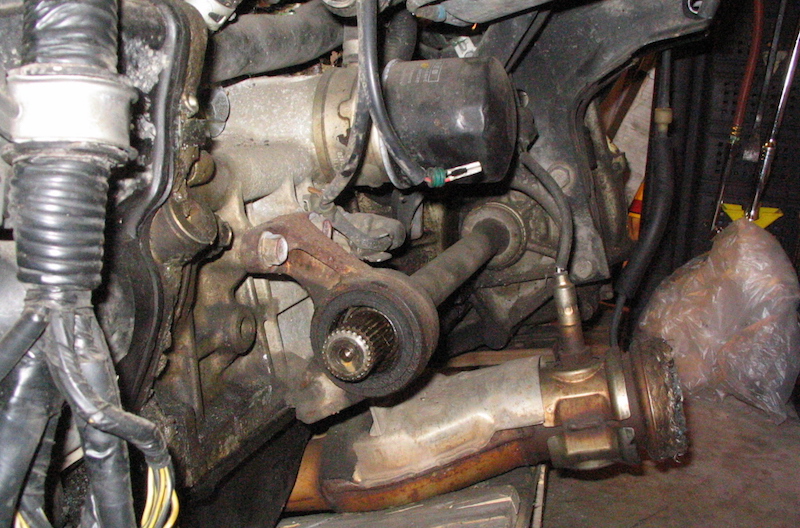You no doubt know that an illuminated Check Engine Light (CEL) on your dashboard means that a sensor on your engine/drivetrain has registered a reading that's out-of-spec. This information is stored by the powertrain control module (PCM) as a trouble code, illuminating the CEL to let you know there's a problem. Our Trouble Code series of articles is intended to help you make your way through these problems.
The OBD-II system of diagnostics and trouble codes was adopted across the board for all makes/models in the mid-90s. OBD-II makes diagnosis and troubleshooting a lot simpler; it's a simple matter to access the trouble codes by just hooking up a code reader device to the vehicle's diagnostic connector (usually underdash on the driver's side). That means a big head start on tracking down the problem, but sometimes the same problem can trigger a series of trouble codes. You or a technician then has to be able to interpret what the codes might mean, rather than just starting to replace parts that may or may not solve the issue.
Before you get much farther in diagnosis and repair, you should:
- Clear the trouble codes and test-drive the vehicle to see if the code reoccurs. In some instances, it may take several failure cycles for the trouble code to be stored.
- Do some research on your year/make/model of vehicle. Some problems are common to certain vehicles and may even be covered by a factory recall or technical service bulletin (TSB).
P0113 Intake Air Temperature Sensor High Input — What It Means
Air density is dependent on temperature; the colder air is, the more dense it is. Your engine's Intake Air Temperature (IAT) sensor monitors the temperature and density of incoming air as it enters the fuel system, and the PCM uses this information to calculate fuel metering. This is especially important at startup on a cold day. The reference voltage to the IAT sensor should be close to 5 volts, and a P0113 code means that the PCM has detected a higher voltage than that number for 0.5 seconds or more.
P0113 Symptoms
- Hard starting
- Lean-running condition
- Check Engine light
What Happens If I Ignore It?
In the long term, a lean-running engine can be subject to internal damage. It will tend to run too hot, causing damage to piston crowns, valves and valve seats. Paradoxically, the gasoline in the air/fuel mixture cuts friction and keeps cylinder temperatures down. If left too long, a lean-running engine can develop cylinder scoring, hotspots on the piston skirts or can even seize.
Diagnosis and Repair
In many cases, a problem with the IAT sensor is caused by frayed, corroded, disconnected or damaged wiring. Check the wiring to the IAT itself before going any farther. If the wiring looks good:
- With a multimeter, check the resistance from the IAT. Remove the IAT and carefully apply heat with a heat gun or hair dryer to it to see if resistance changes. Remember that you can only get a reading on resistance to this sensor when the sensor is disconnected, so be sure to undo the wiring harness for it first.
- If resistance doesn't change after these steps, chances are it's the IAT itself that's at fault. Replace the IAT, reconnect its wiring, clear codes in the PCM and take the vehicle for a drive to see if the codes return.
Is this a trouble code you've come across before? Let us know in the comments.









